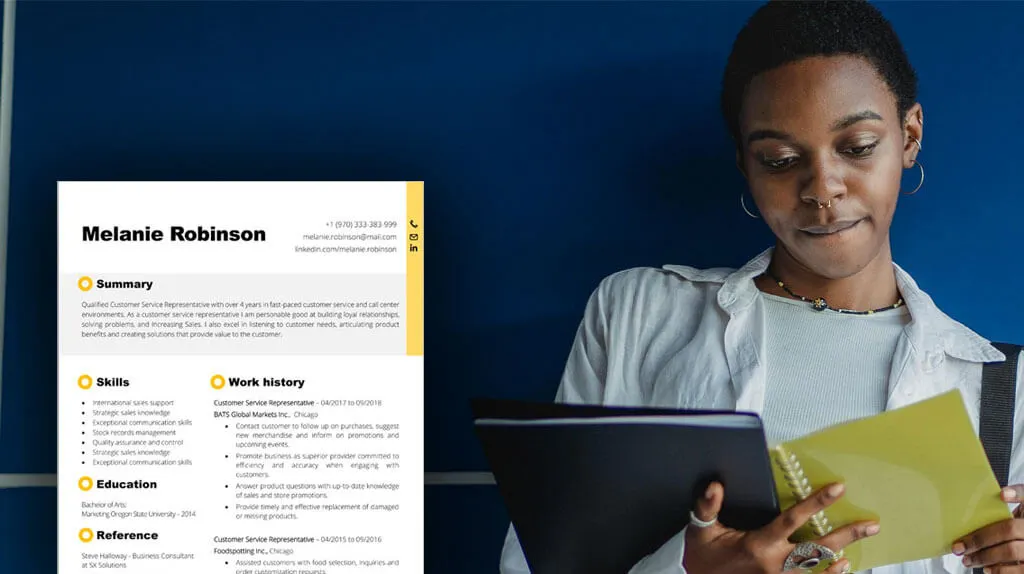In today’s hyper-competitive job market, submitting a generic resume is one of the fastest ways to end up in the rejection pile. While it might seem efficient to have a single resume you send to every employer, it’s actually counterproductive. Recruiters and Applicant Tracking Systems (ATS) are looking for resumes that match the specific job description not just in terms of skills, but in tone, format, and focus.
If you want to get noticed and get hired you need to tailor your resume for every job you apply for. Here’s why it matters, how recruiters think, and how you can adapt your resume strategically without rewriting it from scratch every time.
1. Why Tailoring Your Resume Matters
Every job has unique requirements, even if the job titles are the same. A “Marketing Manager” at a tech startup will need a completely different skillset than a “Marketing Manager” at a large healthcare corporation. Recruiters spend just 6–8 seconds on an initial resume scan if your resume doesn’t instantly show alignment with the role, it’s a missed opportunity.
Additionally, ATS software is used by 90% of Fortune 500 companies to filter out resumes that don’t contain specific keywords or phrases. A generic resume often fails to match enough of those keywords, and may never reach human eyes.
Tailoring your resume boosts your chances in both systems:
- For ATS, it helps you get past the software.
- For recruiters, it shows intentionality, relevance, and effort.
Tip: If you want to save time and still create customized, professional ready resumes templates quickly – www.coolfreecv.com or check CV / resume builder quickly – www.coolfreecv.com/builder-creator-cv it’s designed for job seekers who want to make a big impact with less stress.
2. How Recruiters Actually Read Resumes
Understanding how recruiters think can help you position your resume more effectively. Most hiring managers aren’t reading your resume line by line—they’re scanning for clues.
They typically look at:
- Job titles – Are they relevant and recent?
- Key skills – Do they match the job posting?
- Achievements – Are they quantifiable and tailored to the role?
- Layout – Is it easy to scan and professionally formatted?
Psychologically, recruiters are looking for signals that say:
- “This person understands the role.”
- “They’ve done similar work before.”
- “They bring value, not just experience.”
A tailored resume communicates that you “get” the company’s needs, not just that you’re qualified.
3. Steps to Tailor Your Resume for Any Job
Customizing your resume doesn’t mean rewriting everything. Here’s a repeatable system to do it efficiently:
Step 1: Study the Job Description
Highlight keywords, responsibilities, and any repeated phrases. Focus especially on required skills, tools, and industry-specific terminology.
Step 2: Adjust Your Headline or Summary
If you’re using a professional summary or resume headline, tailor it to reflect the specific role.
Generic:
- Marketing Specialist with 5 years of experience.
Tailored:
- Data-driven Digital Marketing Specialist with 5+ years growing SaaS brands through SEO and paid media.
Step 3: Match Keywords in the Skills Section
Make sure your skills section reflects the exact language from the job description (where appropriate). This helps you pass ATS filters.
Step 4: Reorder or Emphasize Key Achievements
Move relevant experience or projects to the top of each job entry. Quantify your impact where possible.
Generic:
- Responsible for managing content calendar.
Tailored:
- Led monthly content strategy for B2B tech audience, increasing organic traffic by 42% in 6 months.
Step 5: Mirror the Company’s Tone and Culture
Is the job ad formal or casual? Use similar tone in your resume. Some companies value data and metrics, others focus more on leadership or innovation.
4. Real-Life Example: Before and After
Let’s say you’re applying for a Project Manager position at a fintech company.
Before (Generic):
- Experienced project manager with strong leadership and organization skills. Managed cross-functional teams in various industries.
After (Tailored):
- Agile-certified Project Manager with 6+ years leading cross-functional teams in financial technology. Spearheaded implementation of a mobile payments platform, reducing transaction failures by 30%.
Notice how the tailored version speaks directly to the company’s needs and uses specific results.
5. How to Save Time While Tailoring
Yes, tailoring takes effort—but it doesn’t have to take hours. Here’s how to speed it up:
- Keep a Master Resume with all your experience and achievements.
- For each job, create a copy and adjust key sections only.
- Use a resume builder tool that lets you save multiple versions and edit sections easily.
- Use AI tools to help rewrite sections with relevant keywords—but always double-check for tone and clarity.

